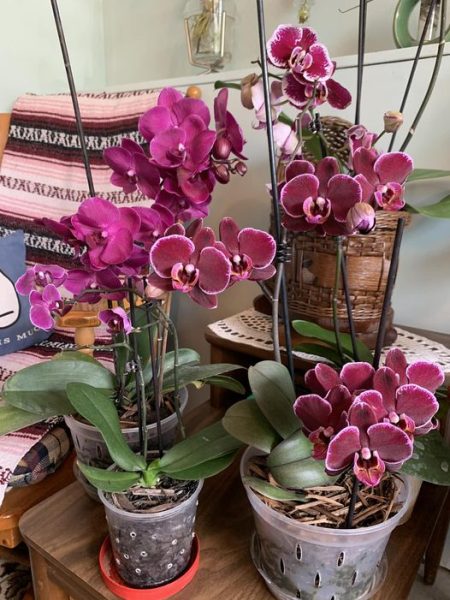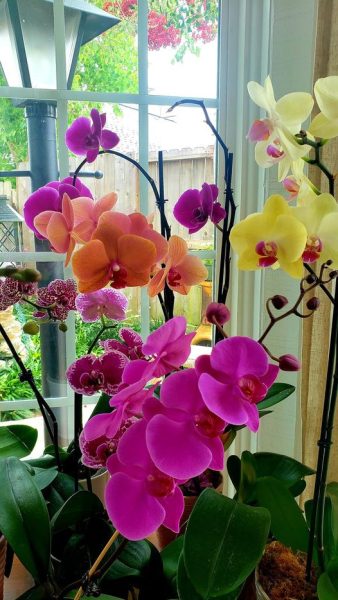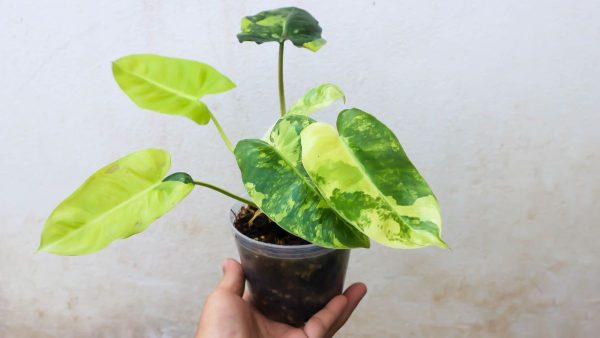Orchids, with their dazzling blooms, have a notorious reputation for being high-maintenance.
But what if I told you that getting your orchid to rebloom isn’t as complex as it’s made out to be? Yes, it requires patience, a bit of know-how, and that special touch of care only a true houseplant lover can provide.
But the reward? A stunning display that breathes life and color into your home.
About Orchid
First things first, understanding your orchid is key. Did you know that there are over 25,000 species of orchids? While Phalaenopsis, or the “moth orchid,” is perhaps the most common houseplant variety, each type has its specific care requirements.
However, the fundamentals of orchid care and reblooming remain largely consistent across varieties.
The Secrets to Orchid Rebloom

1. Rest Period
After an orchid has bloomed, it will enter a rest period.
This is when it’s preparing for its next growth spurt. During this time, reduce watering slightly and stop fertilizing until you see new growth.
This period of rest is crucial for the health of your orchid and sets the stage for future blooming.
2. Right Light Spot
Orchids thrive in bright, indirect light. Finding that sweet spot where your orchid gets enough light without scorching is essential.
A north- or east-facing window is often ideal. But how do you know if your orchid is getting the right amount of light? Look at the leaves! They should be a bright green.
If they’re dark green, consider moving your plant to a brighter spot. Yellowish-green or red leaves might indicate too much direct sunlight.
3. Avoid Overwatering
The most common mistake? Overwatering. Orchids are prone to root rot, so ensuring proper drainage and allowing the potting mix to dry slightly between waterings is crucial.
The rule of thumb is to water once a week, but this can vary based on your home’s humidity, temperature, and the orchid’s potting medium.
4. Keep Environment Humid
Orchids are tropical plants, which means they love humidity. A humidity tray or a room humidifier can work wonders, especially during dry winter months.

The ideal humidity level is between 40% and 70%. Observing your orchid’s leaves can also give you clues about whether it’s receiving enough moisture from the air.
5. Place in a Cool Place
Orchids generally prefer a temperature range of 65-75°F during the day and a slight drop at night. This temperature variation is crucial for initiating the blooming process.
If you struggle to achieve this naturally, consider moving your orchid to a cooler spot in the evenings.
6. Fertilization
Orchids need feeding but with a gentle hand. A balanced, water-soluble orchid fertilizer applied monthly, or even bi-weekly at half strength during the growing season, can provide the necessary nutrients.
But ease up on fertilization once blooms appear to avoid damaging the delicate flowers.
How to Fix Common Issues
If your orchid is dropping leaves but the rest of the plant appears healthy, it could be a natural part of the orchid’s life cycle.
Older leaves will occasionally drop as new ones grow.
If your orchid isn’t blooming, revisit the fundamentals of care. Consider whether it’s getting enough light, the right amount of water, and whether it’s been fertilized properly.
Wrapping It Up
Getting an orchid to rebloom is a testament to your care and dedication as a plant lover. It’s about understanding the subtle needs of your orchid and creating an environment where it can thrive.
With patience and a bit of technical know-how, you’ll be rewarded with breathtaking blooms that make all the effort worthwhile.
Every orchid has its rhythm and timing for reblooming, so keep nurturing, and you’ll soon see the fruits of your labor.

